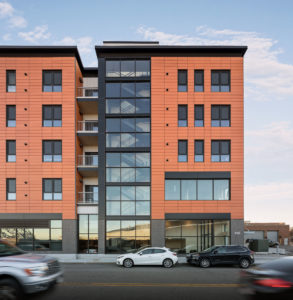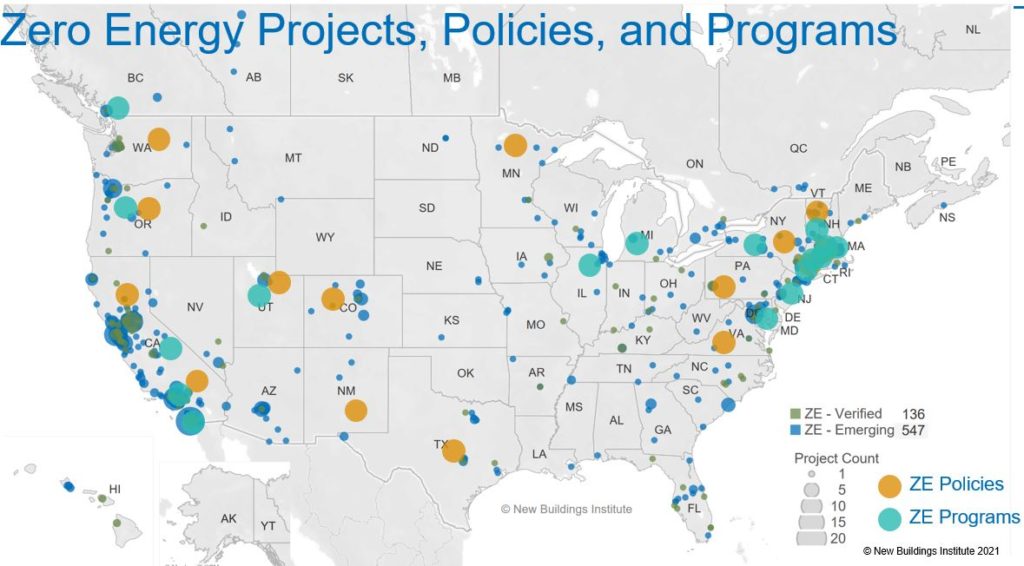Urgency to address climate change, along with policy and market forces trending toward a smart, flexible grid, has led a growing number of utility efficiency program administrators to consider ways to increase support for energy-efficient, zero energy buildings. With the new Biden Administration committed to transitioning the U.S. to a 100% renewable energy electricity grid by 2035 and net zero emissions by 2050, momentum for building efficiency programs that also address greenhouse gas (GHG) reductions is expected to expand. As buildings account for nearly 40% of U.S. carbon emissions, we can’t get there from here without addressing the built environment.

Whether partnering with jurisdictional efficiency programs or operating independently, utilities play a critical role in educating and supporting the building industry as communities strive to meet energy policy goals. Best practices from more than 40 years of running efficiency programs can be applied to new zero energy building programs. Yet, because such programs are at a very nascent stage, many administrators are seeking outside help, often from peers, as they navigate this new territory.
A new working group jointly facilitated by New Buildings Institute (NBI) and the American Council for an Energy-Efficient Economy (ACEEE) offers utility program administrators and others looking to create or expand upon zero energy building programs the opportunity to learn, share resources, and access expert advice. Launched in October 2020, the Zero Energy Programs Working Group is focused on commercial and multifamily buildings, but many participants have experience in the residential sector as well. The group is open to all who are interested in zero energy and zero energy-ready programs.
While program administrators often reach out to one another when designing new programs, the working group offers a structured and consistent way to communicate with one another about challenges and opportunities, to share success stories, and even discuss ways to collaborate.
“National Grid is excited to be part of this working group, with the opportunity to share our experience and learn from others as we continue to refine the Mass Save Zero Net Energy program. The peer-to-peer structure combined with expert guests furthers our efforts to see more zero net energy buildings in our region and beyond,” says Denise Rouleau, lead program manager at National Grid.
Why zero energy buildings?
Zero energy buildings are utlra-efficient buildings that produce as much renewable energy as they consume each year. They are seen as a critical strategy for cutting U.S. energy use and reducing GHG emissions. Zero energy buildings also provide additional benefits, including improved thermal comfort, quieter spaces, better indoor air quality, and improved learning outcomes. And when combined with “smart” technologies that can allow for two-way communication between a building’s systems and the utility, zero energy buildings serve as a powerful grid management tool for utilities.
Eight states, six cities and one county in the U.S. have established zero energy building codes and policies. Some states and local jurisdictions provide tax and other incentives, such as waiving permit fees, for zero energy projects. NBI and ACEEE have been working with jurisdictions across the country to develop policies and create roadmaps to help them achieve energy and climate goals. Meanwhile, most major electric utilities have committed to going carbon-neutral or zeroing out emissions over the next 20-25 years. Unsurprisingly, the map below shows that zero energy projects are more likely to be built where zero energy policies and programs are in place.
The number of zero energy commercial buildings ZE projects grew by over 20% in the last two years. Residential single-family homes are even more widespread with nearly 28,000 zero energy or zero energy-ready single-family and multifamily housing units as of 2019, according to Team Zero. Today, there are just seven active utility-led zero energy commercial buildings programs, according to a recent ACEEE brief; there are 13 programs for residential buildings. More zero energy incentive programs are being studied and explored, which the Zero Energy Programs Working Group is hoping to support.
Launch or grow your zero energy building program
The Zero Energy Programs Working Group offers utility efficiency program administrators a way to get ahead of the curve. “Learning from other utilities that are addressing the same zero energy building topics gives us a fresh take on the opportunities in front of us,” says Clay Monroe, director of customer solutions, Rocky Mountain Power.
The Zero Energy Programs Working Group offers utility efficiency program administrators a way to get ahead of the curve.
The working group functions as both a peer-to-peer network for information exchange as well as a platform for learning and accessing expert advice. It’s open to any efficiency program administrator in the United States (utility, state, or third-party administration; investor-owned, public, and cooperatives; and gas and electric utilities) at any stage of interest or development. Current working group members represent utilities operating in 15 states. When joining the working group, members agree to participate in regular online discussions focused on topics ranging from program development best practices, program attraction through marketing and outreach, energy modeling verification, energy to carbon transition, and more.
To join the Zero Energy Programs Working Group, and attend our April webinar focusing on ways existing efficiency programs have overcome the barriers facing zero energy developers, contact Webly Bowles, NBI project manager, at [email protected] or Rohini Rivastava, ACEEE Senior Researcher, at [email protected].
Feature photo credit: Finch Project | Images provided by ICON Architecture
by Webly Bowles, Project Manager


